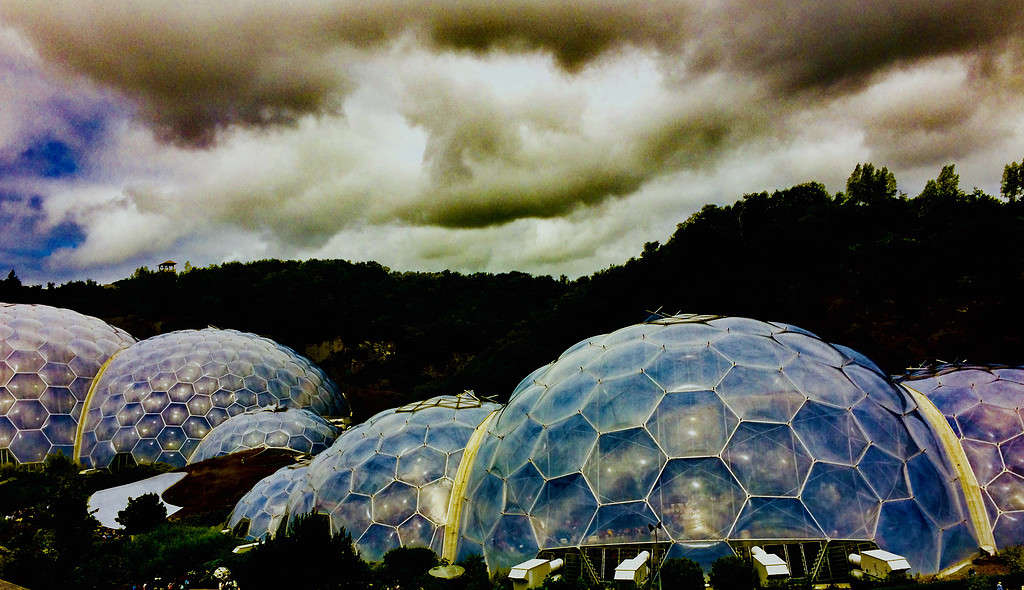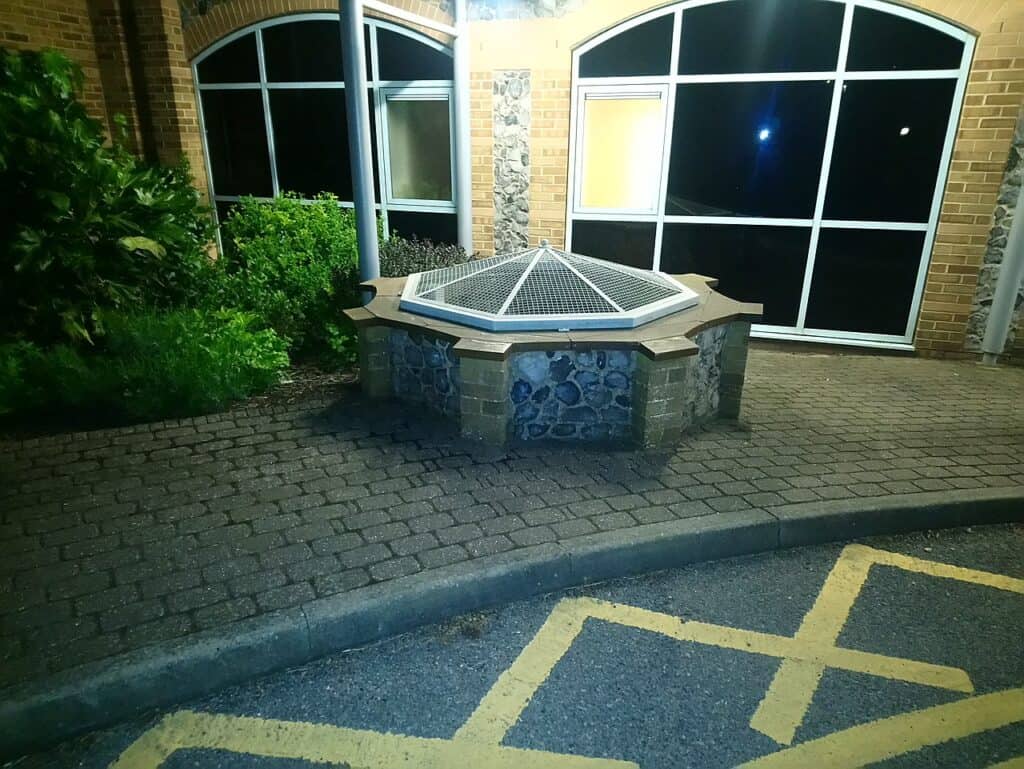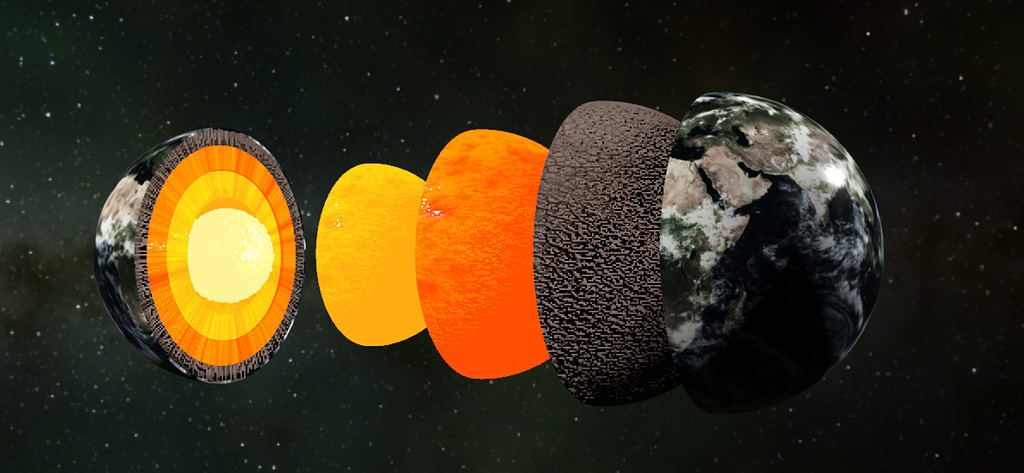In the deepest hole in England, scientists may have found the answer to Earth’s ever-pressing energy needs. The Eden Project has drilled deep into the granite in Cornwall in the search for renewable energy.
What is the Deepest Hole in England?
The deepest hole in England is a geothermal well with a measured depth of 3.3 miles (5,277 meters) located at the tourist attraction, the Eden Project, in Cornwall. Although deep, the well is not very wide. It only has a width of about 10 inches (25 centimeters).
Drilling on the well began in May 2021 and took six months to complete. In June 2023, the energy plant began generating heat to the biomes of the Eden Project. Energy from the well has the potential to supply heat to 35,000 homes or electricity to 14,000 homes.
What is the Eden Project?

The Eden Project has drilled England’s deepest hole three miles deep into the Earth’s crust.
©keZ/iStock via Getty Images
The Eden Project is an ecologically friendly visitor attraction in Cornwall, England. The location is on a reclaimed china clay pit where the Eden Project has built domes (biomes) that house thousands of plants, including rare species such as the titan arum (or corpse flower). The biomes simulate a rainforest and a Mediterranean climate. The area also includes an outside botanical garden.

The titan arum, also known as the corpse flower, blooms once a year in the Eden Project’s rainforest biome.
©iStock.com/passion4nature
The Eden Project’s goal in digging the geothermal well was to harness naturally occurring sustainable energy from the rock deep underground near their site in Cornwall.
How Does the Cornwall Geothermal Well Generate Heat?
Currently, energy from the well heats the biomes and a garden nursery at the site of the Eden Project. The single well heat exchanger works by re-circulating water to the underground depths, where the heat from the Earth warms the water. The hot water is then pumped back to the surface and delivers heat to the buildings. After the water cools, it’s re-circulated back through the pumps to be reheated underground again.
What Are the Benefits of Geothermal Energy?
Geothermal energy is the process of using heat from within the Earth. It’s a clean, renewable source of energy. Unlike wind power or solar energy, geothermal energy is always on. Even on rainy days, or days with no wind, heat from the Earth doesn’t rely on the weather. And unlike un-renewable energy sources, such as coal, geothermal energy will never run out.
Geothermal energy can heat and cool buildings, and generate electricity. Geothermal plants have small footprints and take up a small amount of space compared to other energy sources. The Eden Project estimates that geothermal energy could potentially provide heating for the entire United Kingdom.
Through its geothermal well, the Eden Project hopes to demonstrate the potential energy savings and carbon footprint reductions that can be obtained through deep geothermal heating.
Where is the Deepest Hole in England Located on a Map?
The site for the well is on the edge of the Eden Project estate. The Eden Project is located in Cornwall, about one mile from St. Blazey, and 3 miles from St. Austell.
What’s the Deepest Hand Dug Hole in England?

You’d never know by its unassuming appearance, but the Woodingdean Water Well is 1,280 feet deep.
©Yiorgos Stamoulis / CC BY-SA 4.0 – License
The deepest hole humans have ever dug by hand is the Woodingdean Water Well. It’s a man-made well outside the Nuffield Hospital in Woodingdean, near Brighton and Hove, in England. Although only three feet wide, the well is 1,280 feet deep. That’s larger than the Shard, the tallest skyscraper in the UK.
How Deep Can We Dig Into the Earth?

Earth’s four main layers are the crust, mantle, outer core, and inner core.
©A.shteiwi / CC BY-SA 4.0
The Earth is made of four layers. In the center is the inner core, surrounded by the outer core. Around that is the mantle, and finally, the crust. Humans have never drilled beyond the Earth’s crust.
Scientists wanted to reach the mantle for samples over 50 years ago. In 1958, American engineers attempted to drill through the Earth’s crust and into the mantle with the experiment called, Project Mohole. Unfortunately, they never found out how far they could get because Congress discontinued funding in 1966.
The Deepest Hole in the World
The Soviets took on the challenge in the 1970s with the Kola Superdeep Borehole. Soviet geologists wanted to reach the Earth’s mantle but stopped after drilling a 7.6-mile borehole into the ground in Murmansk, Russia.

Today, the Kola Superdeep Borehole in Russia is welded shut.
©Alexander Novikov / CC BY-SA 4.0 – License
The Soviets drilled into the Earth from 1970 until 1992, when they were forced to stop. The scientists discovered that the deeper they got, the more impossible the drilling became. Temperatures were so extreme that the equipment kept breaking, the rocks became like liquid, and the hole kept collapsing on itself. The highest temperatures recorded in the depths of the hole reached 356 degrees Fahrenheit (180 degrees Celcius). For now, the Kola Superdeep Borehole is the furthest anyone has made it into the Earth’s crust.
The photo featured at the top of this post is © Motiongrapher/Shutterstock.com
Thank you for reading! Have some feedback for us? Contact the AZ Animals editorial team.







